
views
Hiding Wall Holes from View

Hang a picture or poster as a hole-hiding option. Simply position the picture or poster so that it covers the hole, then secure it in place according to your chosen method. The hole’s still there, but only a really nosy guest will ever see it! If you don’t want to add more holes to the wall, there are plenty of ways to hang pictures without using nails. You may want to frame your poster so someone doesn’t accidentally poke through it and into the hole behind! For a cluster of holes, or a really big one, hang a tapestry or decorative rug or quilt instead!
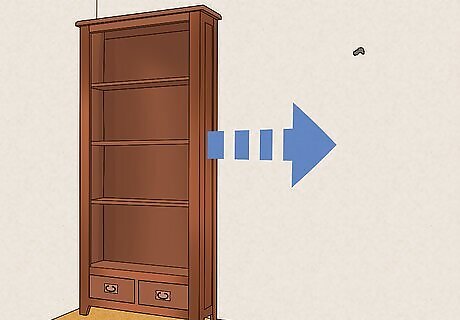
Rearrange furniture to hide a hole as another alternative. Move a tall bookcase over to hide an eye-level hole from view, or slide a loveseat against the wall to cover a lower hole. Placing a floor mirror against the wall can also obscure a smaller wall hole. For safety, tall furniture like bookcases should be anchored to the wall, which means you’ll have to make some more (small) holes in the wall!
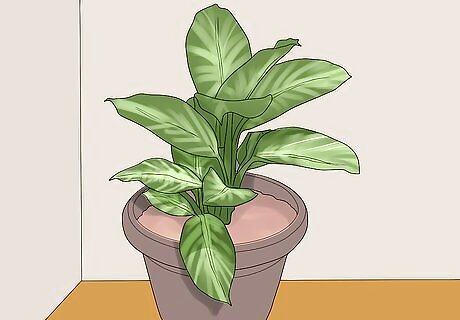
Place an indoor plant in front of the hole as a temporary screen. This is a good way to conceal a hole temporarily—for instance, if you’re having a party and your kids just knocked a hole in the wall playing indoor hockey! However, unless the hole happens to be in a good growing spot for your plant, you’ll want to move it back to its original location. Floor plants or tabletop plants can do the job. The fuller the plant, the better concealment it will provide.
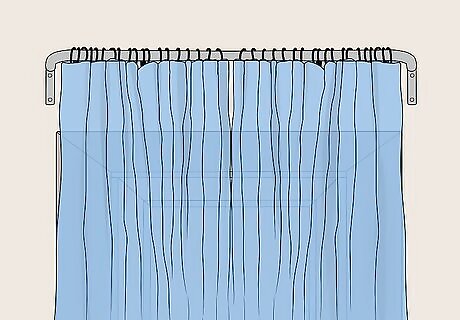
Hang longer or wider curtains to conceal a hole near a window. If you have a hole in the wall right above, below, or beside a window, try replacing your current window treatment with a larger one that covers the hole. Just make sure you don’t create new holes while trying to hang the curtains! Elongated curtains can help to make a room with a low ceiling appear “taller,” and longer and wider curtains can make a window that’s too small for the room appear larger.
Filling Nail Holes
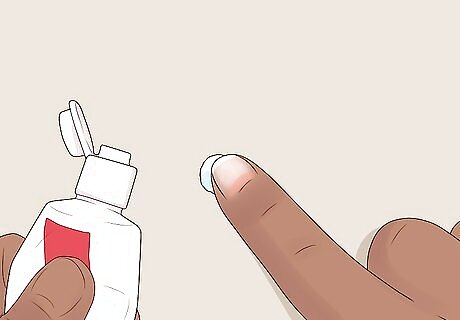
Press white toothpaste into the hole for a quick repair. Squeeze a small dab of white toothpaste onto your fingertip and press it into the nail hole. Smooth over the toothpaste glob with your finger, then use a damp rag to wipe away any excess on the wall. The toothpaste will start to dry out and shrink within 24 hours, and may simply fall out of the hole after that time. Remember that these are temporary solutions! Most of these temporary tricks work best on white or off-white walls. You could try squeezing a tube of white toothpaste into a bowl and stirring in a few drops of food coloring to approximate a different wall color, if you’re desperate!

Rub white bar soap over the hole as another short-term fix. A soft, white bar soap (Ivory is the most well-known brand of this type) will work best here. Just keep rubbing the bar over the hole until enough soap rubs off to fill it in. Then, wipe away any excess with a clean, damp rag. Don’t expect this trick to work for more than 24 hours or so—the soap will dry and shrink fairly quickly.
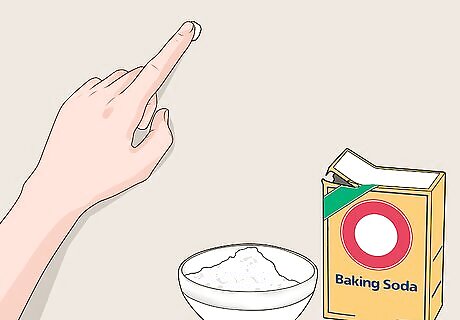
Make a temporary filling paste with baking soda and water. Put a large spoonful of baking soda into a bowl and stir in just enough water to make a thick (toothpaste-like) paste. Use your finger to press it into the hole, then wipe away the extra paste with a damp rag. The baking soda paste will dry out—and probably fall out of the hole—within a few days at most.

Try children’s play-dough to match a colored wall. Search your kids’ play area or the store shelves for a color of play-dough that roughly matches your wall. Then, press a small amount of it into the nail hole with your finger and wipe away any excess with a clean rag. The play-dough will dry, crack, and probably fall out of the hole within a few days. Try making your own play-dough if you like!
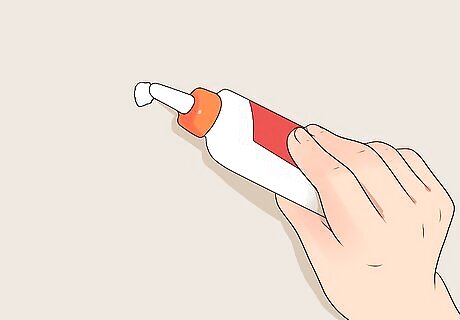
Plug the hole with white glue or caulk for a longer-term fix. Squeeze the white glue or caulk into the hole until it’s overfilled. Then, use a flat edge (like a putty knife or old credit card) to scrape away the excess. Follow up with a damp rag to clean up any excess material on the wall. These remedies—especially the caulk—have a better chance of being a long-lasting fix. They’re less likely to dry out and shrink so much that they fall out. If you prefer applying a paste, you can mix white glue and baking soda, then apply it with your finger.

Fill nail holes with spackle for a permanent repair. Add a small amount of spackle to a putty knife, then press and smooth it into and over the hole. Use the blade of the putty knife to scrape away any excess, then wipe over the area with a damp cloth. Wait 24 hours for the spackle to dry, then gently sand it with fine-grit sandpaper. You can get spackle at any home improvement store.
Repairing Larger Holes

Cover golf ball-sized or smaller holes with repair tape and joint compound. Stick a piece of fiberglass wall repair tape over the hole. After that, scoop up some joint compound on a putty knife and smooth it over the tape. Add the joint compound in thin layers, letting it dry for 2-4 hours between coats. Once the tape is covered, use fine-grit sandpaper to smooth out the patch. Make the layers of joint compound as thin as possible around the edges of the repair job. This is called “feathering,” and makes it easier to blend the patch seamlessly into the surrounding wall. Joint compound is widely available at home improvement retailers.
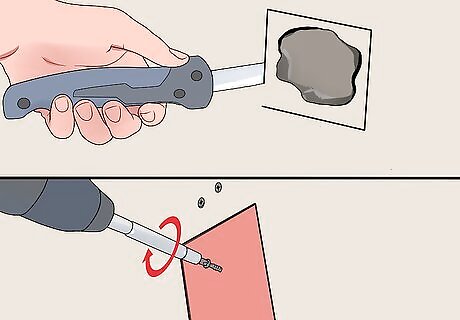
Cut around and patch a large hole in a sheetrock (drywall) wall. Use a drywall saw to cut out a square that extends from wall stud to wall stud on either side of the hole. Cut a matching square from a new piece of sheetrock and secure it onto the wall by screwing it into the studs. Apply joint tape around the seams, and smooth on layers of joint compound until the seams are invisible. It will take about 3 coats of joint compound to cover over the tape and seams. Apply thin layers and let them dry between coats. Use fine-grit sandpaper to smooth out any rough spots.

Use patching plaster for large holes in lath-and-plaster walls. Carefully scrape out any loose plaster around the hole, trying not to enlarge it much more. Trowel on a thick first coat of patching plaster over the exposed horizontal wooden slats (“lath”) that support the plaster wall. When this layer is firm but not fully dry, add a thinner second layer and smooth it over to blend into the surrounding wall. Once the top layer of patching plaster dries, go over it with fine-grit sandpaper to smooth it and blend it into the surrounding wall. Before adding the patching plaster, secure any loose pieces of lath by screwing them into the closest wall studs, and replace any broken lath pieces.
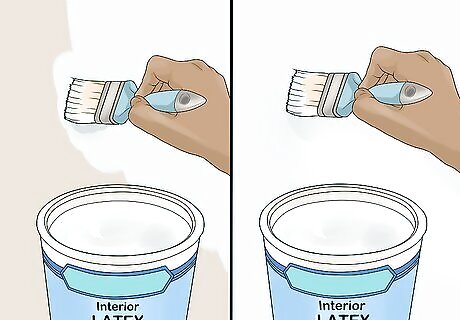
Prime and paint a wall repair job of any size. Whether your patch is the size of a marble or a volleyball, you should prime and paint over the repair material. Add 1-2 coats of interior latex primer over the dried patch with a brush, and let each coat dry completely. Go over the primer with fine-grit sandpaper, wipe away any dust, and apply 1-2 coats of interior latex paint. Paint stores can match existing paint colors, especially if you bring them in a sample (e.g., a piece from the hole you patched). However, even if you have some of the original wall paint, it will never match the surrounding area perfectly. So, especially for larger patches, painting the entire wall may be your best option.

















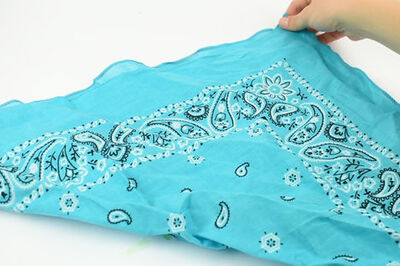
Comments
0 comment